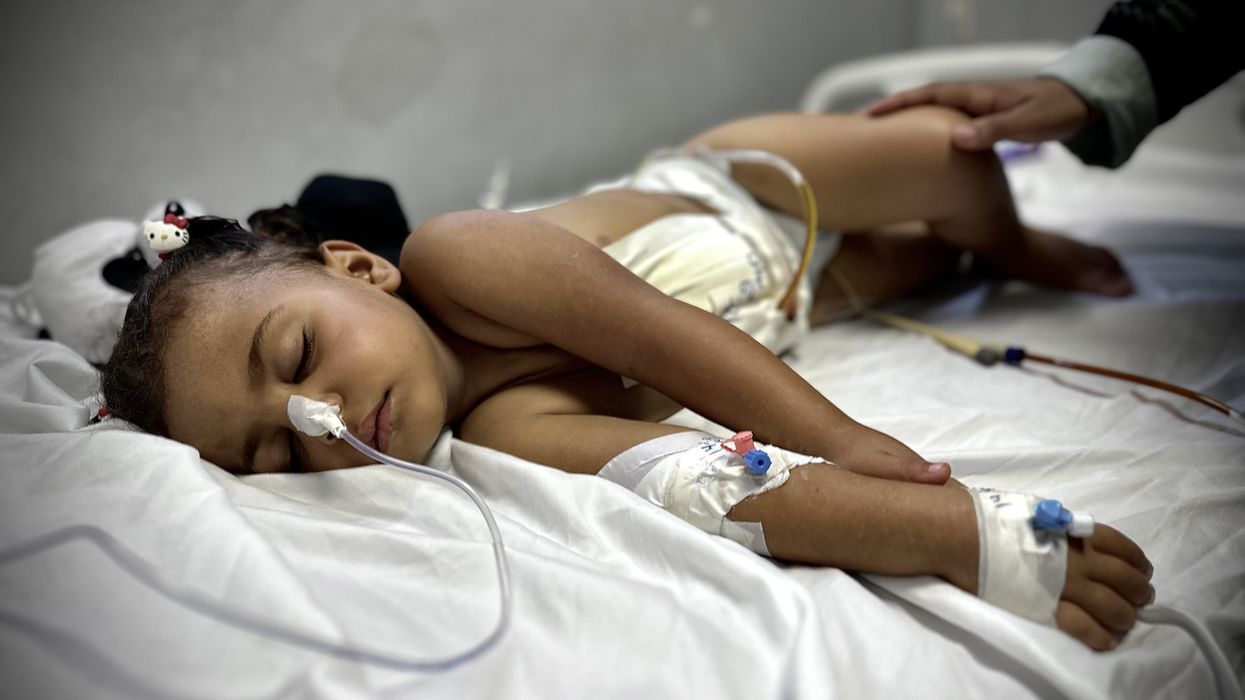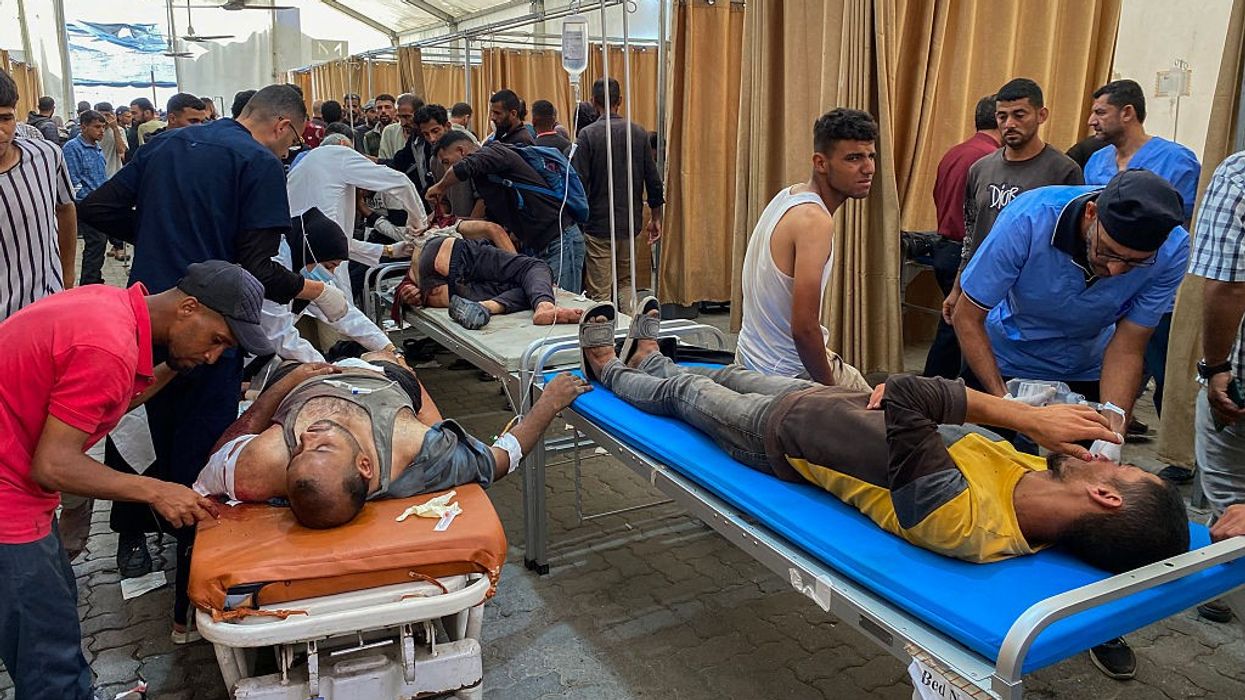But nothing prepared me for the weeks I spent volunteering at a hospital in Gaza. Nothing prepared me for the faces.
Not the statistics. Not the headlines. Not even 40 years of watching the Israeli occupation strangle Palestinian life with checkpoints, silence, and administrative cruelty.
No one should need more proof to feel the inhuman precision with which children are being targeted in Gaza, crushed not by chance, but by design.
When I arrived at Nasser Hospital in Khan Younis, I thought I might be helpful. I had skills, experience, knowledge. But I found something else entirely: a theology of suffering, a human Blue Mosque, a Hagia Sophia built of tarps and rebar and ash. A sacred geometry laid down in grief.
A place where stones have been replaced by the soft bones of children, and the call to prayer is now the wail of a mother whose baby was just wrapped in a death shroud. Gaza is not rubble; it is a broken house of God, a mosque of flesh and resilience, where every injured child is a mihrab pointing them back to their humanity.
I found faces, hundreds of them, of children, mothers, teachers, tired men with empty pockets and broken sandals. Each looked directly into my eyes and asked, without accusation or anger: Are you still human?
The French Jewish philosopher Emmanuel Levinas wrote that “the face of the Other” is the foundation of ethics. Not a metaphorical face, but the literal presence of another human, staring at you in their radical vulnerability. Not asking for anything. Just being, and in that being, commanding you: Thou shalt not kill. And thou art responsible.
That’s Gaza. It is the face of the Other turned toward us. We, the West, armchair allies, media skeptics, Israel Defense Forces apologists, and progressive handwringers alike, are being looked at.
And we are failing.
There is no universe, no scripture, no coda, no strand of human DNA where it is natural to shoot children in the back of the head as they carry sacks of flour. There is no ethical system, no wartime doctrine, no security calculus in which a mother killed while reaching for fava beans can be explained away without doing violence to language itself.
What is happening in Gaza is not war or strategy or self-defense. It is the ritualized and systematic destruction of the most vulnerable, performed in broad daylight under the collapsing architecture of international law.
It is unnatural. Not just wrong, not just cruel, but a rupture in the moral biology of our species. It offends the fundamental contract of being alive. It is a humiliation of biology and a heresy against physics. It is unnatural, like fission: a tearing apart of what was never meant to be touched. It belongs to the stars, to the great incomprehensibility, to cataclysm, to apocalypse. It does not belong on Earth, and never in the body of a child.
There is a room in the emergency department at Nasser Hospital with six trauma bays. As in any hospital, there are monitors and equipment. But what defines the room is the floor: a mosaic of congealed, scrubbed, and recongealed blood. Every 20 minutes, a crew enters the stage, they pick up debris, tissue, IV tubing, and gauze, then throw water across the floor. With long squeegees, they push the red tide into the drain. It is mechanical, but also meticulous and highly orchestrated. Still, it cannot erase the smell. Or the taste of blood in the air. Or the faces.
A 14-year-old child came in while I was there. She was brought from Mawasi, where the “safe zone” is nothing but coordinates agreed upon by artillery software. My fellow US physician had passed a tent school in Mawasi earlier, likely the same kind of school where my patient studied: a school that had been turned inside out by a drone toting a high-velocity rifle.
The girl’s shoulder was gone. Not dislocated. Not fractured. Gone. Replaced by shredded muscle and smoke and dirt. Her dark eyes were open. She was conscious. Her mouth moved, but she did not speak. That is Levinas’ face: the face that makes no demand but reveals everything.
The children killed while retrieving food were not on a battlefield. They were in the ruins of a society that has been deliberately starved. This is not collateral damage. This is intentional. It is the predictable outcome of a siege that has weaponized hunger and then punished the hungry for trying to survive it.
What makes it more obscene is the silence following each killing. The Western governments that mouth the words “civilian casualties” like they are a clerical error. The media that speak of “complexities” and “context,” as if complexity justifies targeting starving people and context renders a dead toddler’s face invisible. The theological contortionists who try to fit this into some redemptive historical arc, as if a baby’s flesh split open by shrapnel is somehow part of prophecy.
It is not. It is a desecration of everything sacred. And it is being done with the money, silence, and diplomatic cover of the so-called civilized world.
I did not go to Gaza to be a hero. I went because I’ve watched the slow, humiliating collapse of US medicine, where we document more than we listen, discharge patients without follow-up, fight insurance companies harder than sepsis. I went to remember what it means to be a physician, not a provider or a billing unit. Someone who kneels by a body and stays.
And here’s what I found. In Gaza, where there are no electronic medical records, no scribes, no Joint Commission audits, no Press Ganey scores to measure patients’ experience, I found something we have lost: time. Not time in the capitalist sense of billable hours or productivity, but sacred time, shared time, human time. In Gaza, physicians sit with people. They bear witness. Sometimes they fix them. Sometimes they just keep the face of the human being before them from being alone.
I also found a clarity of purpose. In Gaza, the distance between patient and physician collapses. There is no buffer, no euphemism, no illusion. Physicians get their hands bloody and hold patients as they die. And they do it without glory, recognition, or compensation.
They do it, and I did it, because the face is looking at us. Because it is not a child from Gaza. It is a child. Period.
For reasons rooted in privilege, the words of white US witnesses seem to carry more weight. But some truths are self-evident. No one should need more proof to feel the inhuman precision with which children are being targeted in Gaza, crushed not by chance, but by design.
During my stay, I thought often of my children back home. Although they are adults, I missed them with an ache that broke open every time I heard a child cry.
Before I went, I recorded a video in case I didn’t return. I wasn’t trying to inspire them or ask them to follow; I just needed to say the truth. The world is on fire in some places, and sometimes I feel I have to move toward it. Because if I don’t, something in me goes quiet and stays quiet. Silence doesn’t belong in Gaza. Not now.
So I say clearly: It is unnatural to kill children for being hungry. It is unnatural to shoot a girl in the spine because she walked near a food truck. It is unnatural to erase a family for the crime of standing in line for aid.
And if we allow that to become natural, if we flinch and say nothing, we are no longer witnesses; we are participants. And we will deserve the severity of history’s judgment.


